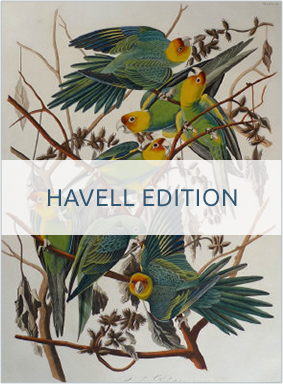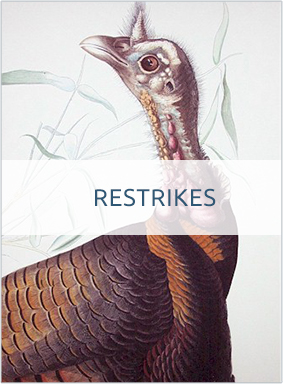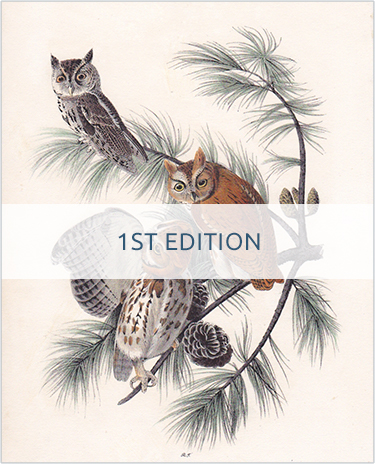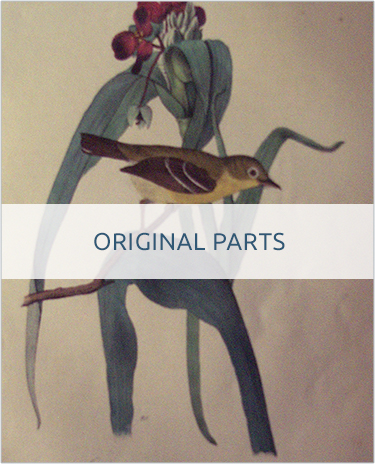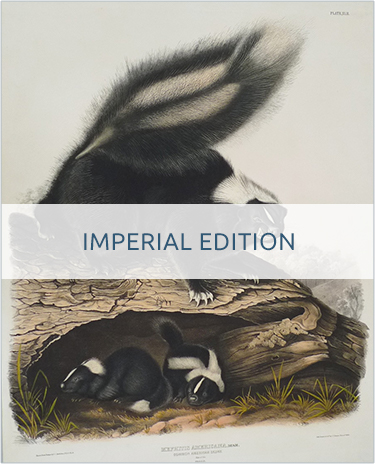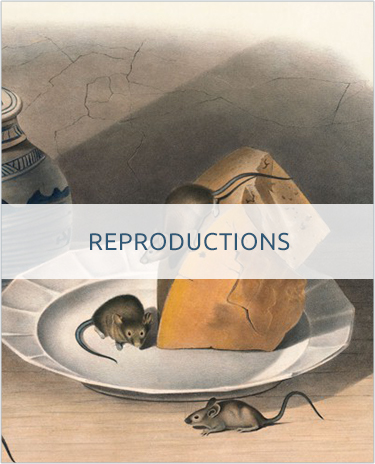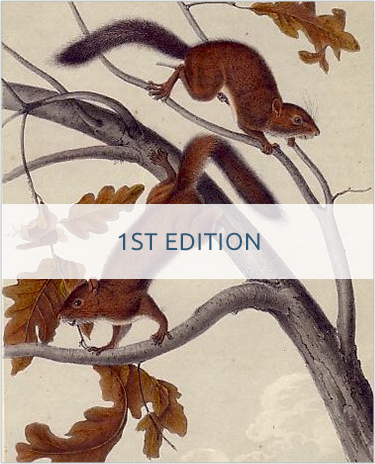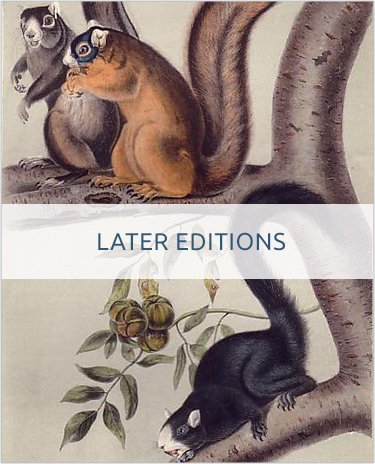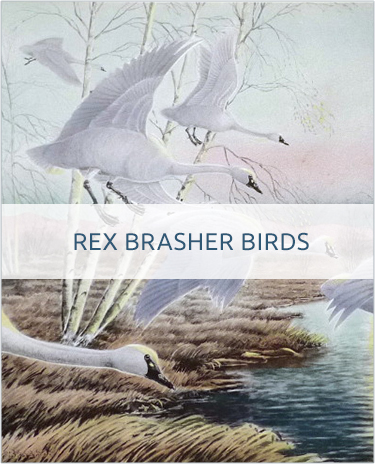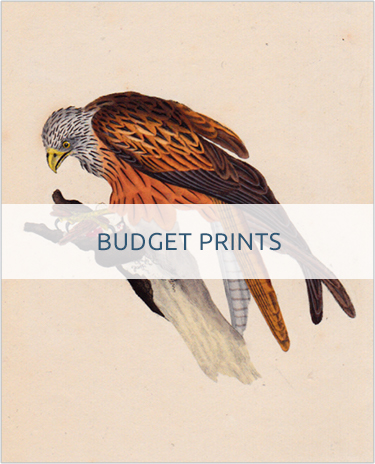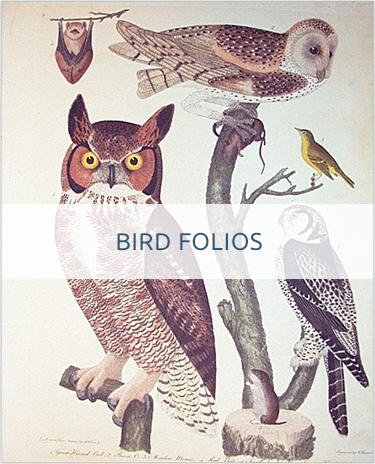Minniesland.com sells prints from all original Audubon editions, including both folio (large) and octavo (smaller) prints of Audubon’s birds and animals (often referred to as the mammals or quadrupeds). These magnificent antique prints range in age from 140 to 180 years. Minniesland.com also sells high-quality Audubon folio reproductions (birds and animals) and other original antique prints.
Prints
The Birds of America
Birds in Folio SIze
I offer an excellent selection of original Audubon bird prints, including prints from both original folio editions, the Havell Edition (1827-1838, hand-colored etchings with engraving and aquatint by Robert Havell of London) and the Bien Edition (1858-1860, chromolithographs by Julius Bien of New York).
I also have restrikes from the Havell Edition, including both uncolored and hand-colored prints. Restrikes are print made with the original printing plates but at a later time.
For those who have octavo-sized budgets, but want Audubon art (either his prints or his original paintings) in the original sizes, I offer an excellent selection of fine facsimile prints. Want the beauty of the birds, but lacking wall space? This area offers reproductions (prints somewhat reduced from the size of the original) as well.
Birds in Octavo Size
I have a large selection of both first and later ocatvo editions of Audubon’s “small work” (hand-colored stone lithographs, 1840-1871). These prints (on paper measuring about 10 x 6 inches) each present a single species, and are adapted from the original Havell Edition images.
The first octavo edition was published 1840 to 1844 by Audubon in collaboration with his sons. These are the only octavo prints done under Audubon’s personal supervision. See first edition prints. I also have available some of the original parts (also called numbers or fascicles) from this series. These are the prints in the format in which they were first sent to subcribers. These parts are very rare and hard to find.
After Audubon’s death, his sons carried on by publishing additional editions beginning with the second edition in 1856. As had become a common practice in lithography, these prints use a a two-stone lithographic process, with the original lithographic stone (prepared for the first edition) placing the basic image, and with the addition of a printed colored tint placed by a second stone. Eventually the sons undertook a collaboration with the Roe Lockwood publishing firm. After the death of the Audubon sons in the early 1860s, the Lockwood firm continued to publish the work through 1871. The lithographic stones having been destroyed in a fire around 1870, the firm was forced to discontinue the series after using up all of the inventory backlog. See later edition prints.
The (Viviparous) Quadrupeds of North America
Animals in Folio Size
Imperial Folio prints. I have an excellent selection of these large hand-colored stone lithographs including a number of the smaller (and inexpensive) mammals. These original hand-colored stone lithographs after over 150 years old.
Love Audubon’s Imperial animals, but can’t afford an original? I have some high-quality giclée and offset facsimiles of these rarely reproduced prints. Or take a look at my restrike (a later printing using the original stone) of the White Wolf.
Animals in Octavo Size
Beginning in 1849, Audubon’s sons began to issue the animals in a smaller format, replicating with the Quadrupeds of North America what their father and they had done ten years earlier with the Birds of America. Costing a total of $31 (or a dollar for each part of five plates with accompanying text), this work was more widely affordable than Audubon’s earlier work. In a state of almost continuous publication through the early and mid 1850s, Audubon’s small mammals was an important work in American natural history, and would continue to be published until the stones were destroyed in a fire in 1870 and the last prints used in one final undated edition by the George Lockwood Company in 1871.
I offer both first edition and later editions of these smaller and well-priced animal prints. I also have available a very rare and complete original part (also called a number or a fascicle) which includes five plates and text (including the Grizzly Bear and the Texan Hare). The original parts show the format the Audubons used to distribute the work to their subscribers.
Other Artists
I currently have a selection of fine antique prints by other artists. Most are in the area of natural history.
Among my most popular prints are bird prints by Rex Brasher. Right now I have a nice selection of prints remaining from the third volume of Brasher’s monumental work The Birds and Trees of North America. This volume includes ducks, geese, swans, the flamingo, the spoonbill, ibises and herons. Published in the 1930s, each print was hand-colored by Brasher using pochoir. These prints are beautifully realized, and are poorly captured by the available reproductions (mostly from larger-format books). I also have a complete set of this work (12 volumes) with very interesting provenance. If interested in the complete set, please inquire for complete information.
Another popular category of prints is budget natural history prints. These give a big bang for your decorating buck. These decorative prints include hand-colored engravings from a 19th century edition of Goldsmith (birds, animals, insects, and fish), plus small hand-colored engravings from late 18th century works by Buffon and Wilhelm (art by J. J. Schmuzer). These economical prints provide visual interest and a nice connection to the past.
Although my emphasis is Audubon, over the years I have acquired antique folio bird prints from other great natural history artists of the 18th and 19th century, including work by John Gould, Prideaux John Selby, Mark Catesby, Alexander Wilson, and Cornelius Nozeman.


